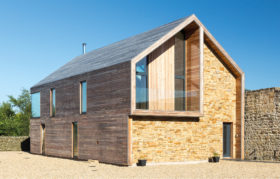
9th & 10th September, Westpoint Arena, Exeter. 100s of suppliers, seminars, expert advice. Explore all the options, all in one place – only at Build It Live.
Book your free tickets now
9th & 10th September, Westpoint Arena, Exeter. 100s of suppliers, seminars, expert advice. Explore all the options, all in one place – only at Build It Live.
Book your free tickets nowBathrooms were once thought of as a purely practical space, but now this zone is viewed by many homeowners as a place of personal oasis and relaxation. The bathroom design trend for achieving the opulence of hotels and spas is increasing, and many self-builders and renovators are allocating bigger budgets for this area of the house as a result.
The first bathroom design step is to consider how the room will be used by the dwelling’s occupants. “By day we need a functional zone, but at night we want to be able to retreat and relax,” says Kate Griffiths from Kohler.
Whether you’re creating your own bathroom from scratch or updating an existing suite, there’s many practical factors to bear in mind before splashing out on that freestanding tub you’ve had your eye on, for instance.
Flooring, heating, lighting and ventilation all need to be factored into plans from the early design stages – here’s what to bear in mind.
Practicality is the main consideration when it comes to specifying a floor covering for this zone. It’s essential to select a water-resistant surface that won’t become slippery when wet. Low-maintenance, stain-proof and easy to clean, porcelain tiles are a top choice.
“A huge advantage of this material is that the units can be manufactured in a range of realistic finishes, including marble, limestone, concrete and wood.
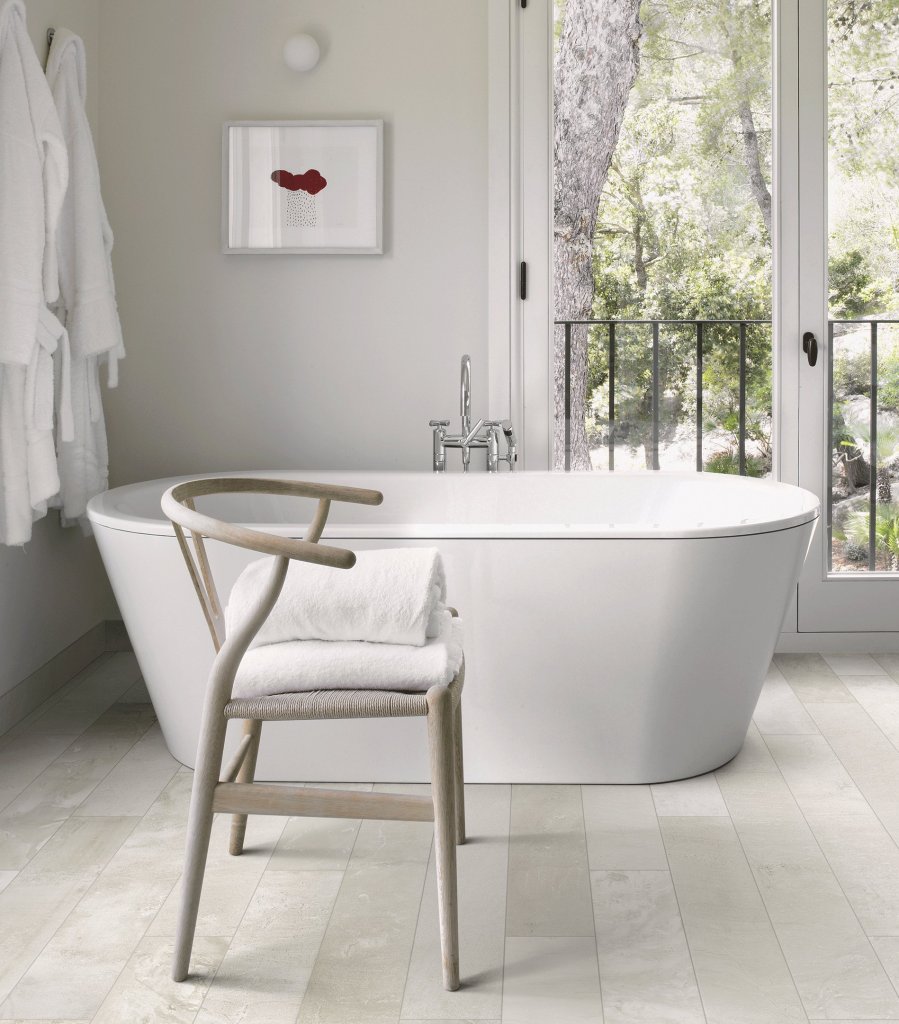
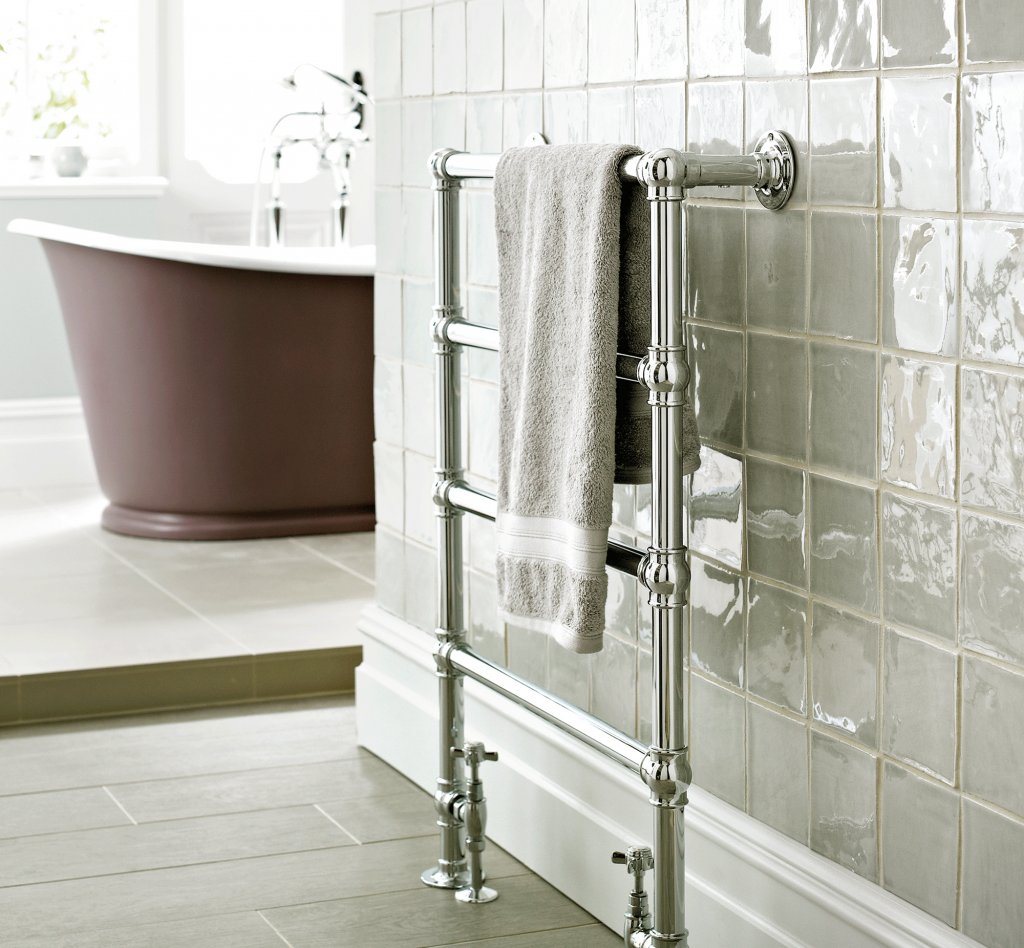
“This makes it possible to achieve the look you want without the challenges of regular upkeep,” says Chris Grainger from Stone & Ceramic Warehouse. “We recommend a tile with a matt, textured surface. This will ensure the floor is anti-slip and safe.”
Thanks to their excellent conductivity, porcelain and ceramic tiles are also natural partners for underfloor heating.“If you do opt for tiled flooring then consider the size and format as well as the material, as this can affect the overall feel of a room,” says Lisa Elbourn from Fired Earth. “A larger unit with less grout joints can help the space appear bigger and less cluttered.”
If your heart is set on a natural stone covering, slate, marble and limestone are all suitable for use in the bathroom. However, bear in mind that if you do opt for this material, floor joists may need to be reinforced to take the extra weight. Plus, the surface should be occasionally re-sealed as stone is a porous material.
As timber is a hygroscopic material that expands in warm and humid environments, solid planks are not a great flooring option for the bathroom. However, engineered solutions can provide a robust alternative.
This kind of product is constructed in man-made layers, featuring a top surface veneer of real wood fixed above cross-laid sheets of softwood or ply. If you’re working with a tighter budget, vinyl can be a wallet-friendly alternative to the above materials.
Planning a layered lighting scheme at the outset of your project will help create a setup that suits all your needs. “Carefully think about the lighting required from a practical point of view,” says Lisa from Fired Earth.
“It would be frustrating if the room was dark and dingy when you’re in a rush in the morning, for example. Consider how the level of illumination can suit a relaxing ambience, too.”
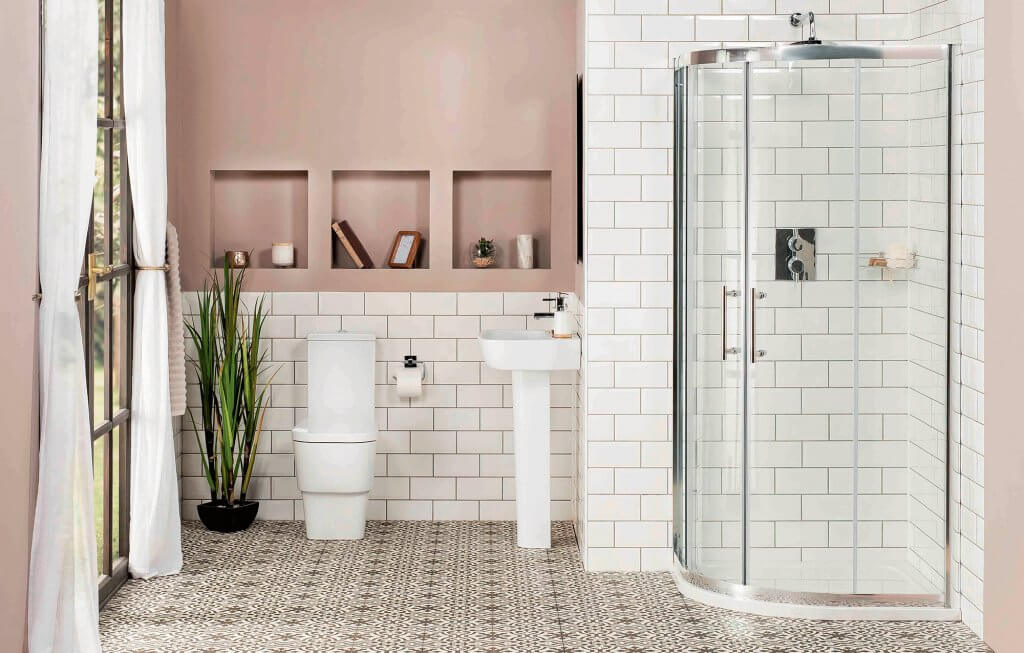
In this bathroom, built-in nooks have been incorporated as a clever storage device. The sanitaryware and Aria Quadrant shower enclosure were supplied by Bathroom Takeaway
A main fixture positioned in the centre of the room will provide the brightness you need for everyday tasks, such as showering. Some homeowners choose to incorporate ornamental chandeliers or other striking fittings to create an eye-catching focal point.
“Task lighting around mirrors is essential,” says Lisa. “This can be achieved with separate fittings that are wall-mounted, or you can buy mirrors or cabinets that incorporate lighting, too. Spotlights within the floor or along the base of a wall can also help to create a relaxed,
spa-like atmosphere.”
Fitting several circuits with individual controls will help you to dim and brighten the room as desired. All electrical installations need to comply with the Building Regulations – and you’ll need to specify appropriate IP-rated products to protect against moisture ingress.
If your budget will allow it, you can explore the possibility of home automation systems that will operate your lighting, heating and outlet settings efficiently. For example, some baths and showers come with digital controls that can be used to adjust the temperature and flow of water.
Techy features such as automated sound systems can add an extra flourish of luxury, too. Villeroy & Boch’s Finion mirror and bath, for instance, can be supplied with integrated Bluetooth speakers that connect to your smartphone.
Adequate ventilation is essential for this zone, as the humid environment and prolonged contact with moisture may otherwise cause damp to take hold. According to Building Regs
Part F, either a window or a suitable extractor fan should be incorporated to ensure the bathroom receives an adequate supply of fresh air.
A growing number of self-builders are opting to incorporate mechanical ventilation and heat recovery (MVHR) systems, which work by extracting moist air from wet zones such as kitchens and bathrooms, recycling the heat and distributing a fresh supply to other rooms at the same time.
If you’re tackling a renovation, an alternative solution is to fit a ducted fan on the ceiling of the bathroom. It’s best to position the fan on an exterior wall of the property so waste air can be easily directed outside.
Once ventilation is taken care of, it’s time to decide on heating. While radiators are the traditional choice, many homeowners are doing away with them to free up precious wall space, laying underfloor heating (UFH) instead.
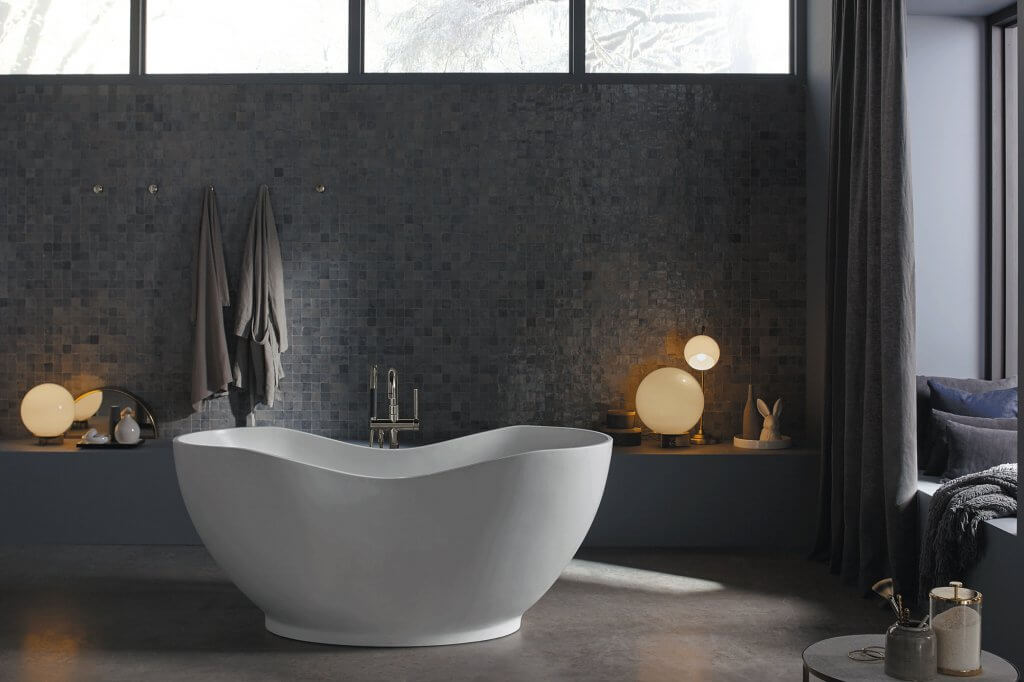
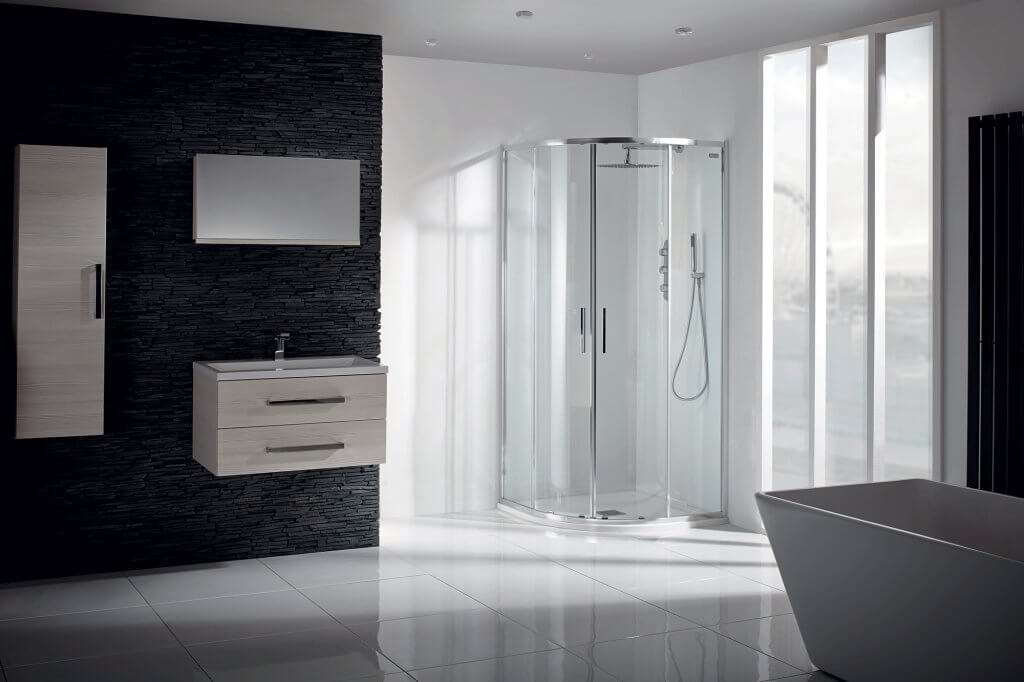
Providing an even spread of heat throughout the room and cosy warmth underfoot, UFH is the preferred choice for many self-builders. “Having a warm floor also means any water on tiles will quickly evaporate, making it safer and less slippery,” says Chris from Stone & Ceramic Warehouse.
A range of slim retrofit systems is available for renovators who want the benefits of UFH without the extra floor build-up.
If you do choose to have radiators, select a model that can deliver the required heat output for the room. Heated towel rails are an alternative, and some models can be used to form an attractive design feature.
Striking the right balance between practicality and aesthetics can be a challenge, especially given the varied array of functions a bathroom has to perform.
“When it comes to deciding where you’re going to position fittings, the best way forward is to think about how they’re used and in what order,” says Phil Etherden from The Albion Bath Co.
“We often recommend that the basin is placed closest to the door, as it’s often the last stop in most bathroom routines. The WC and other fittings can be positioned further into the room.”
If you’re renovating, it’s worth thinking about the aspects you currently dislike and what you’re keen to change. For example, are you frustrated by a lack of storage space? Or are you keen to do away with the tub so you can install a spacious walk-in shower?
Summing up your aspirations in this way will help you establish a priority list when it comes to planning the overall layout of the zone. “If you’re updating an existing suite, layout can often be dictated by the original services,” says Lisa from Fired Earth.
“So, in a lot of cases your contractor will be the key to achieving a particular configuration and calculating whether something is feasible. Bear in mind that moving or adapting services to accommodate a certain layout will add to your budget, too.”
Experimenting with scaled floorplans can be done the old-fashioned way – with graph paper and a pencil – or by using an online planning tool. For example, Villeroy & Boch’s version allows you to experiment with layouts and create a virtual view in just a few steps. But don’t forget that you’ll need to incorporate ventilation, plumbing and electrics, plus circulation space around showers and baths.
If you’re working with a limited amount of room, there are plenty of clever design tricks to create the illusion of more space. “Wall-hung sanitaryware is a possible solution that will create more light across the floor, plus make for easier cleaning,” says Kate from Kohler.
If there’s a particular range of fittings you like, check to see whether smaller versions of each unit are available, as every free centimetre will count once the zone is complete. Adequate storage to hide away lotions, potions and other bathroom clutter is also essential. If space is an issue, look out for slim, wall-mounted basins that double up as cabinets.
Top image: The Albion Bath Co’s compact Neptune Advance tub adds an eye-catching focal point. Measuring from 1,505mm long, this model is ideal for areas where space is limited
